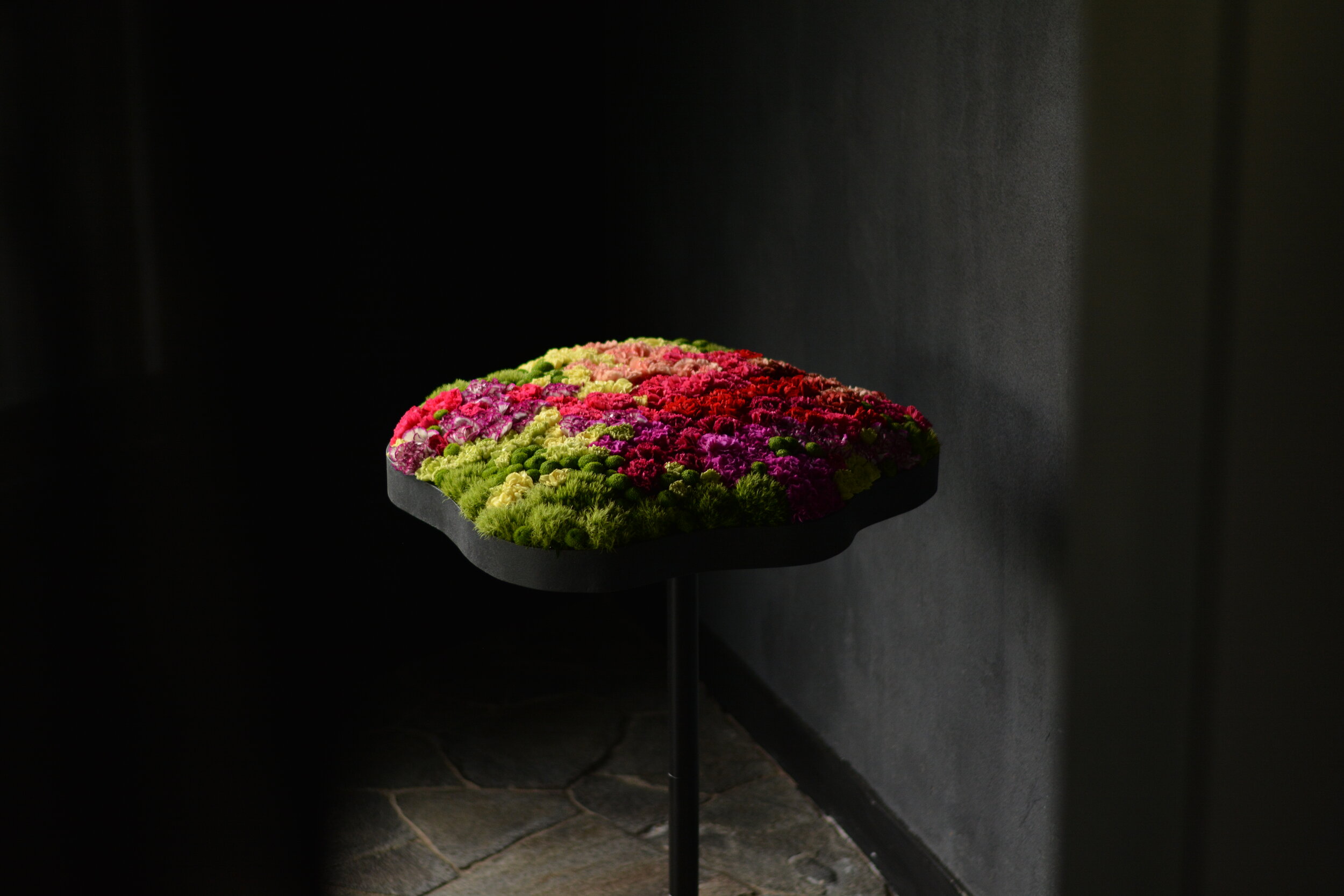Norihiko Kamei’s palm sized flower landscapes
Norihiko Kamei at work
In his sleek Kamakura-based atelier, Norihiko Kamei creates contemporary artworks rooted in the traditional Japanese arts of Ikebana and Tea Ceremony. He expresses the ideal in miniature gardens, explores the surreal in imaginative flowers, reflects the world in small wagashi (Japanese confectionery) and captures the formless in actual shapes. Meet Norihiko Kamei, the artist who creates all of these marvels.
Kamei-san, you studied design and fine art and your first works were Modern Art pieces. What brought you to flowers and to studying ikebana?
I have always been interested in traditional Japanese culture and started to learn Sado 茶道 (the way of tea) with the aim to incorporate it into my work. But I soon realized that this traditional practice was too broad for me so I decided to focus on Kado 花道 (the way of flowers) which plays an important role in the way of tea.
What attracted you most in ikebana? Do any of its principles still influence your work today?
Whilst I appreciate the traditional understanding and philosophy of Ikebana, I was fascinated to learn about it as a three-dimensional art form that engages a lot with space. In particular, the minimalist approach and the “less is more” philosophy that are inherent to Ikebana have greatly influenced my current works. I feel like I can emphasize the message of my work with less material.
In your works “Yomihana” (pictured above) ‘dismantling and reconstructing several flowers’ your focus lies on surreal creations. They are flowers that you imagine and compose with different plant materials. Do you see your work as ikebana creations, floral design or contemporary art?
I see my works transcending any specific category. They can be anything depending on how you look at them.
You did a beautiful collaboration with the antique dealer Shugo Inoue for his catalogue, “Antique is magic“. What did you love most about this project?
The antiques selected by Inoue san are beautiful and have a lot of history. They are such powerful pieces that it was easy for me to draw inspiration from them to create my artworks. Also, the variety of containers – not all aimed for Ikebana – made the experience even more exciting for me.
What are you plans for future projects involving Ikebana?
Currently, I am focusing on a project called “Hanayama” 花山 (mountain flower) where I recreate mountain sceneries with flowers. In line with this project, I would like to continue with this idea of “Mother nature fitting into the hands” and create ideal landscapes using flowers in palm sized vases.










